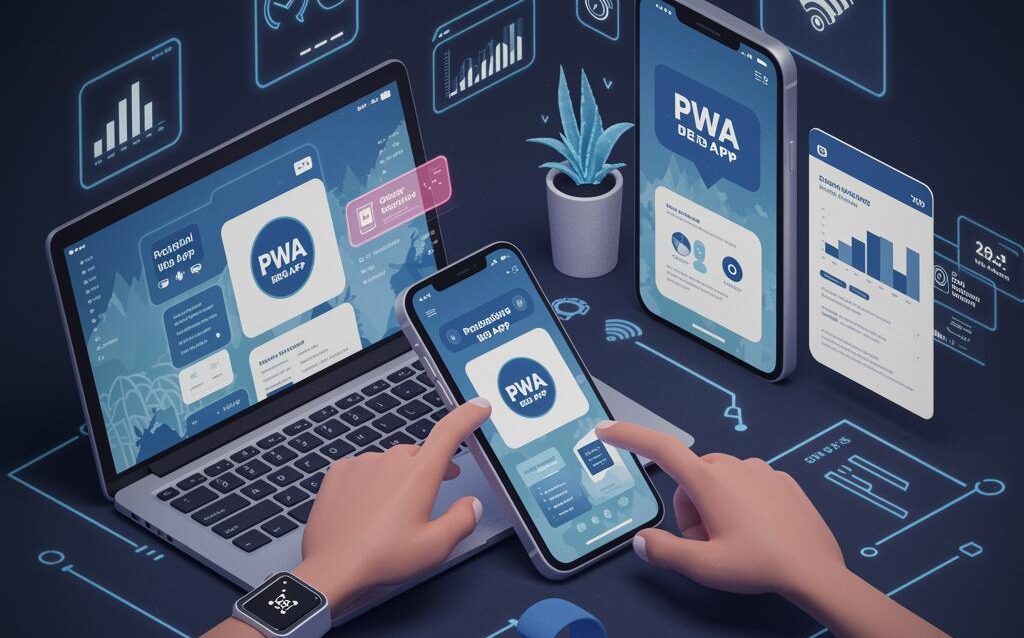PWAs in 2025: Standards & Capabilities Forecast
Progressive Web Apps in 2025: Current Standards and Capabilities
Progressive Web Apps (PWAs) have steadily evolved since their inception, blurring the lines between native applications and traditional websites. Looking ahead to 2025, PWAs are poised to become even more powerful and pervasive. This post explores the current standards and capabilities shaping the future of PWAs, providing insights into how developers can leverage these technologies to create exceptional user experiences.
Key Standards and APIs Driving PWA Evolution
Service Workers: The Backbone of Offline Functionality
Service workers remain the cornerstone of PWAs, enabling offline functionality, background synchronization, and push notifications. By 2025, we expect service worker capabilities to be further enhanced with:
- Improved Background Sync API: Facilitating more reliable and flexible background data synchronization, crucial for applications requiring real-time updates.
- Enhanced Caching Strategies: More sophisticated caching mechanisms, allowing for granular control over which assets are cached and how they are updated, leading to better performance and offline resilience.
- WebAssembly Integration: Leveraging WebAssembly within service workers to perform complex computations offline, unlocking new possibilities for data processing and machine learning tasks.
Web App Manifest: Defining the PWA Identity
The web app manifest continues to be crucial for defining the look and feel of a PWA, including its name, icons, and display mode. In 2025, we anticipate:
- Enhanced Manifest Features: More options for customizing the PWA’s appearance and behavior, such as custom splash screens, theme colors, and orientation settings.
- Improved Installation Prompts: Smarter and more user-friendly installation prompts that encourage users to add the PWA to their home screen.
- Integration with Operating System Features: Deeper integration with operating system features, allowing PWAs to access platform-specific APIs and functionality.
Web Push API: Engaging Users with Timely Notifications
The Web Push API allows PWAs to send push notifications to users, even when the app is not actively running. Future advancements in this area include:
- More Granular Notification Controls: Allowing users to customize notification preferences with greater precision, reducing the risk of notification fatigue.
- Enhanced Security and Privacy: Stronger security measures to protect user data and prevent malicious notifications.
- Integration with Rich Media: Supporting richer media formats within push notifications, such as images, audio, and video.
Advanced Capabilities and Emerging Trends
Web Components: Building Reusable UI Elements
Web components are gaining traction as a way to create reusable UI elements that can be easily integrated into PWAs. In 2025, we expect:
- Wider Adoption of Web Components: More developers embracing web components to build modular and maintainable PWAs.
- Improved Framework Support: Frameworks like React, Angular, and Vue.js providing better support for web components.
- Standardized Component Libraries: Emergence of standardized component libraries that developers can use to quickly build complex UIs.
WebXR: Immersive Experiences on the Web
WebXR is enabling developers to create immersive virtual and augmented reality experiences directly within the browser. This opens up new possibilities for PWAs in areas such as:
- Enhanced Product Visualization: Allowing users to virtually try on clothes, preview furniture in their homes, or explore architectural designs in 3D.
- Interactive Training and Education: Creating engaging and immersive training simulations that can be accessed on any device.
- Gamified Experiences: Developing interactive games and entertainment experiences that leverage the power of VR and AR.
The Intersection of AI and PWAs
Artificial intelligence is increasingly being integrated into PWAs to provide personalized and intelligent user experiences. This includes:
- Personalized Recommendations: Using machine learning to provide users with personalized recommendations based on their browsing history, preferences, and behavior.
- Chatbots and Virtual Assistants: Integrating chatbots and virtual assistants into PWAs to provide users with instant support and assistance.
- Image and Speech Recognition: Using AI to enable PWAs to understand and respond to user input through images and speech.
Practical Insights for PWA Development in 2025
To effectively leverage the capabilities of PWAs in 2025, developers should focus on:
- Prioritizing Performance: Optimizing PWAs for speed and efficiency is crucial for providing a seamless user experience.
- Ensuring Accessibility: Making PWAs accessible to users with disabilities is essential for creating inclusive and equitable web experiences.
- Embracing Progressive Enhancement: Building PWAs that work on a wide range of devices and browsers, gracefully degrading functionality on older platforms.
- Staying Up-to-Date: Continuously learning about the latest standards and best practices in PWA development.
Conclusion
Progressive Web Apps are evolving rapidly, offering developers powerful tools for creating engaging and user-friendly web experiences. By staying informed about the latest standards and capabilities, developers can leverage the power of PWAs to build innovative applications that meet the needs of users in 2025 and beyond. The future of the web is progressive, and PWAs are at the forefront of this evolution.

